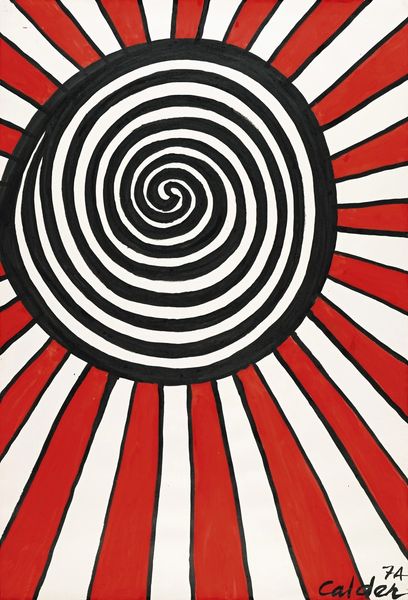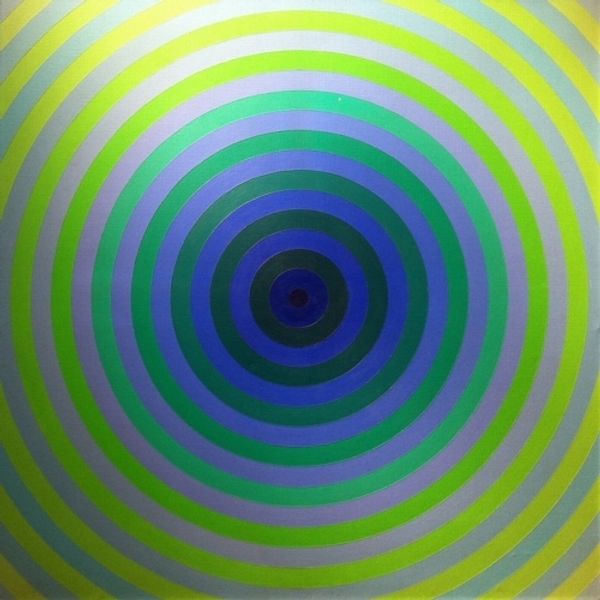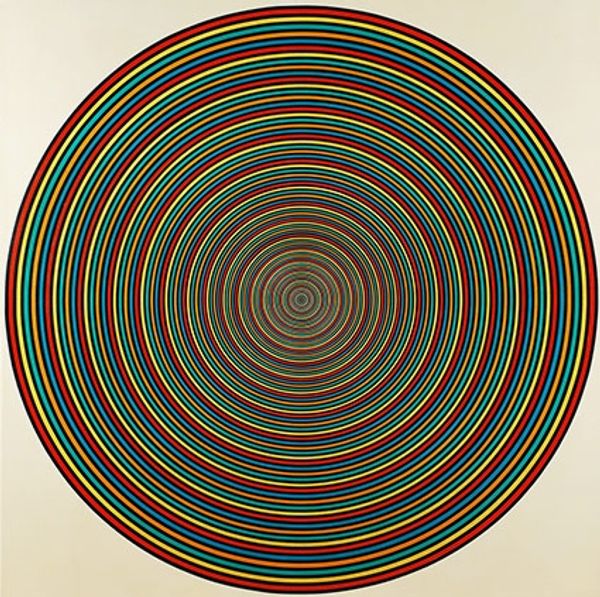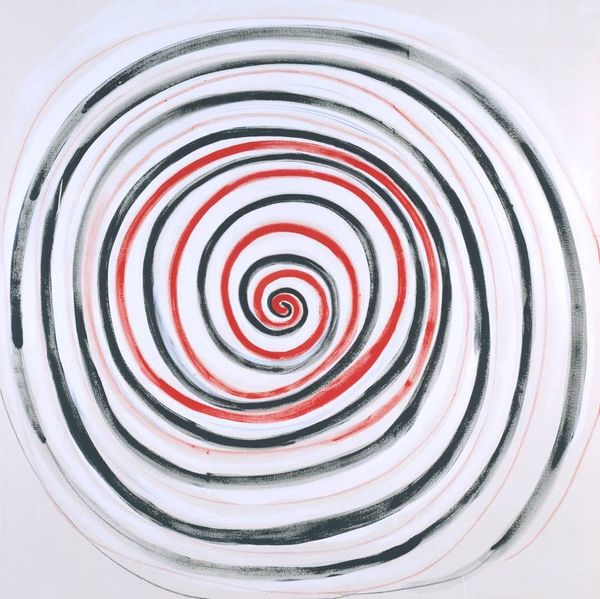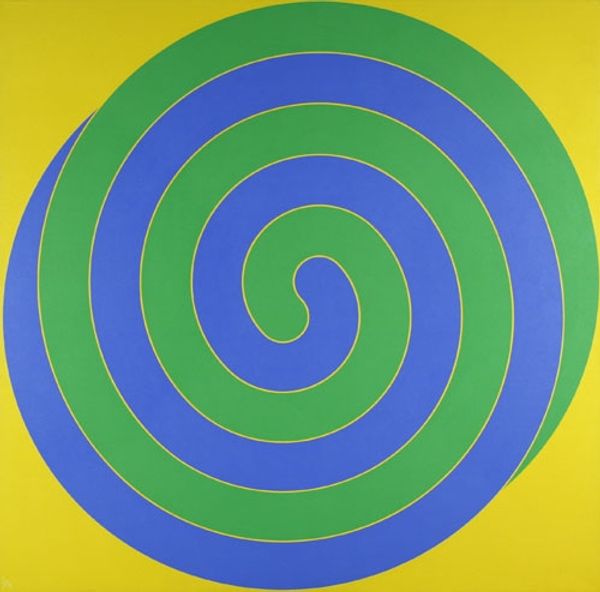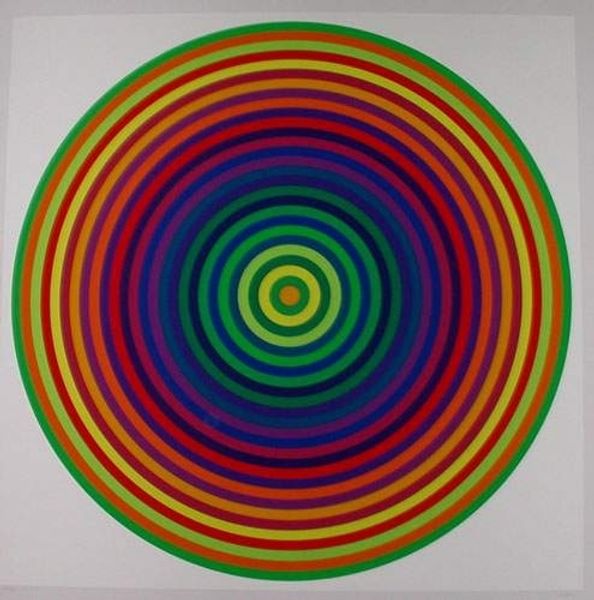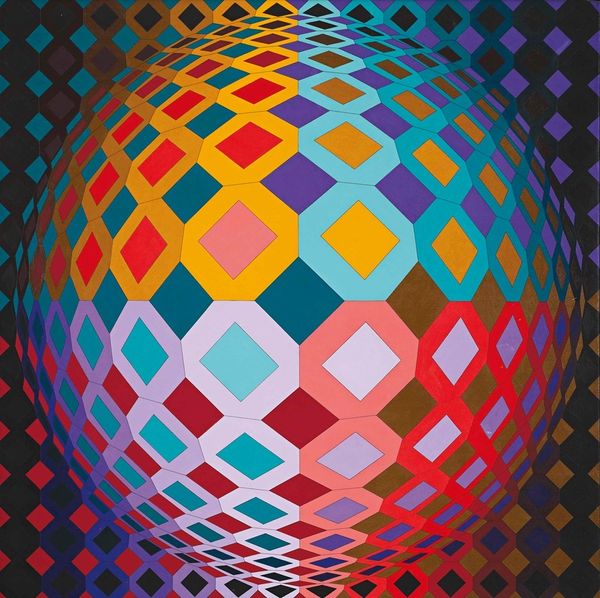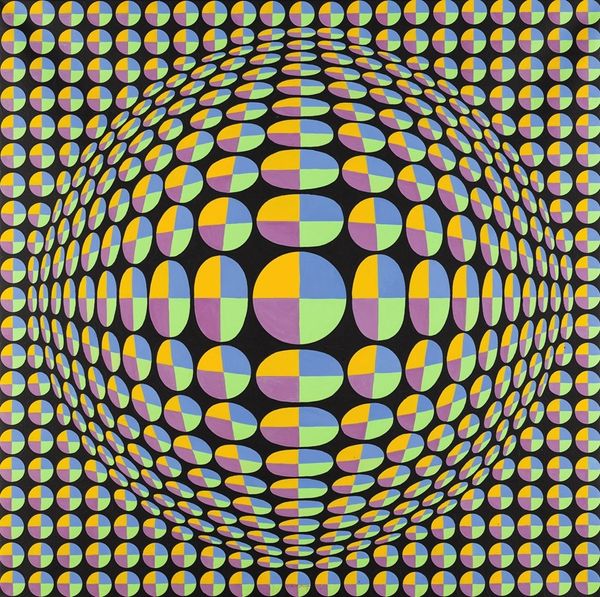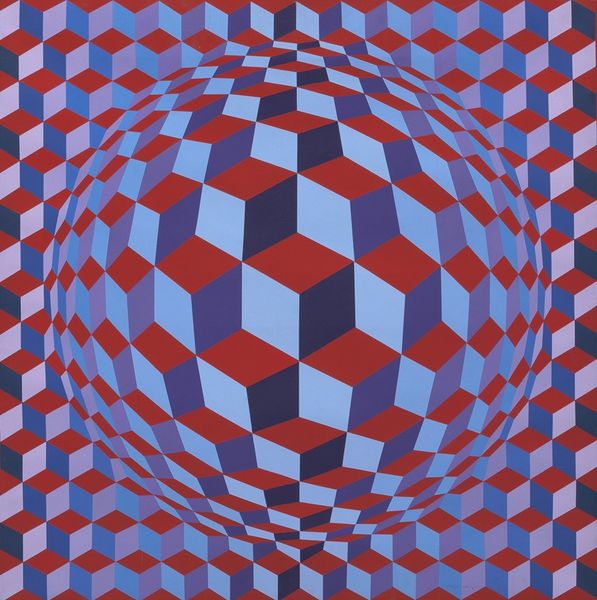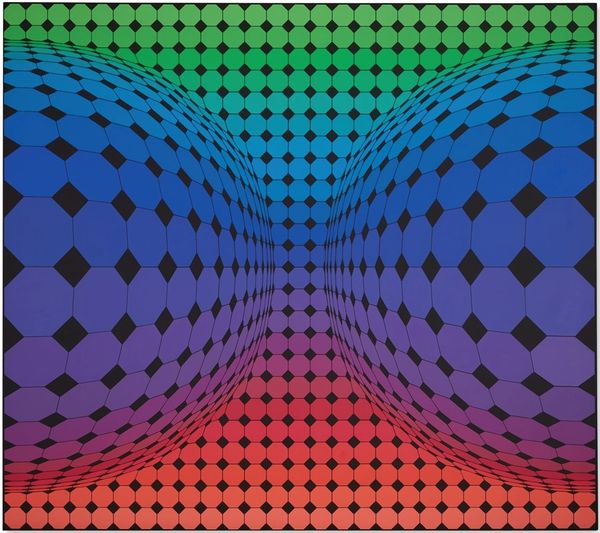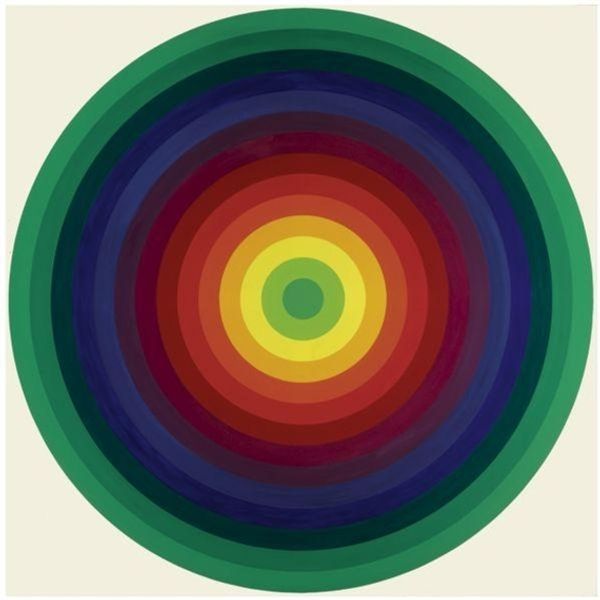
Copyright: Martha Boto,Fair Use
Curator: Martha Boto’s “Eclipse chromatique No. 1” from 1973. She constructed it with acrylic paint, creating this hypnotic dance of colorful circles. Editor: It’s…intense. The circles seem to vibrate against that black backdrop. A little overwhelming, maybe, but also undeniably vibrant. Curator: Boto's practice deeply considers the materiality of paint and how it interacts with space. She was interested in the tangible processes involved in its application, as seen in each stripe laid onto the canvas. This kind of work challenges the rigid boundaries of fine art. Editor: I agree; its dynamism positions the artwork within post-war society, which, alongside a desire to understand the increasingly chaotic pace of change, aimed to disrupt what constitutes traditional art. Also, thinking about the time, doesn’t this piece speak to a broader context of experimental lifestyles and a desire to alter perception of what is normal and how movements shift our relationship to it? Curator: Absolutely, the repetitive circular patterns invite the viewer to analyze how these acrylic strokes produce and reflect light; she essentially crafts an optical phenomenon on a flat surface. Editor: Beyond that interplay between viewer and art object, though, it speaks to broader conversations of equality during the 1970s. Think about the social upheavals – the push for equality, civil rights movements – and the ways those energies manifest in art that plays with perspective and expectation, prompting one to actively look and participate. Curator: Very insightful. Looking closely, one notices minor imperfections. That to me, adds a crucial element: the trace of the human hand in an otherwise perfectly geometric design. Editor: Indeed, this human intervention softens its harder, geometric qualities, suggesting a vulnerability—a crack in an otherwise polished façade. And how can it be viewed beyond its materiality and methods if we refuse to explore the social environment that shaped the creator and the creation? Curator: Agreed, acknowledging its production gives us vital insight. Boto challenges viewers and producers through her use of simple materiality in concert with vibrant and active imagery, pushing the field of art in dynamic and unexpected directions. Editor: In the end, reflecting upon its form and function together inspires conversations about the very social values informing art. Curator: Yes, together they point toward critical perspectives on artistic construction.
Comments
No comments
Be the first to comment and join the conversation on the ultimate creative platform.
